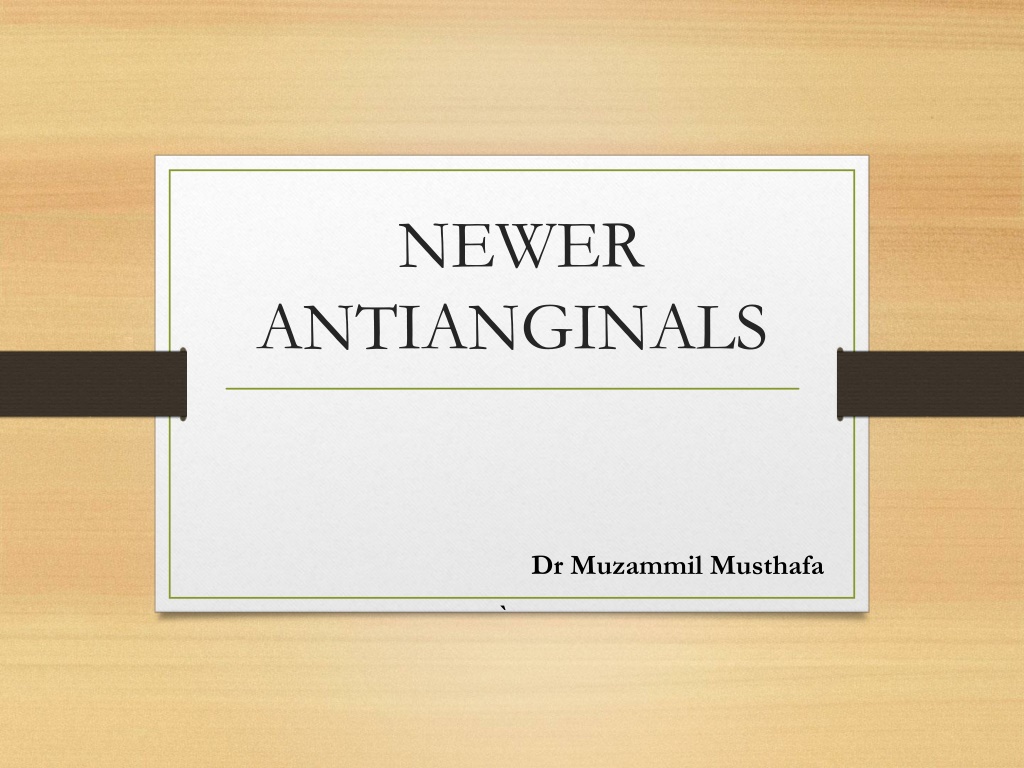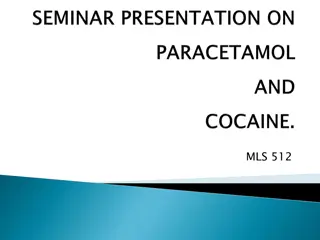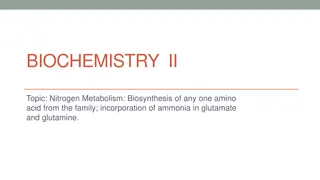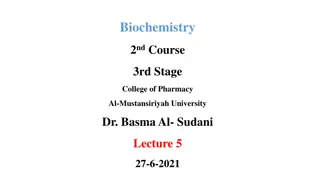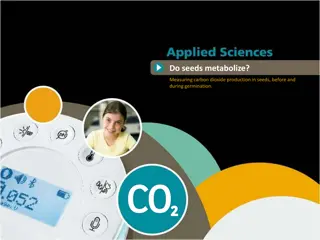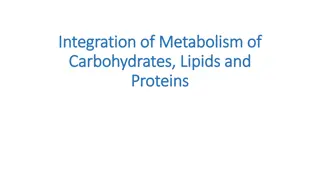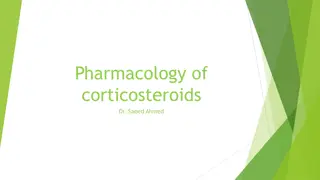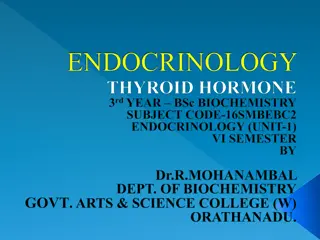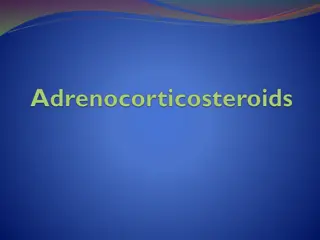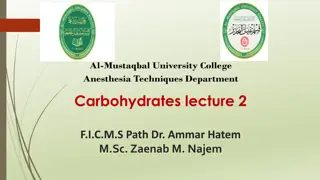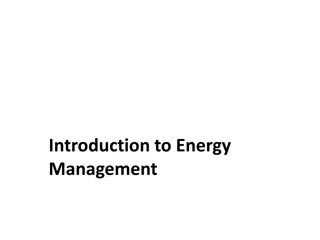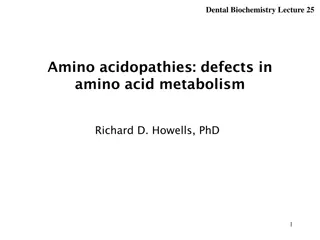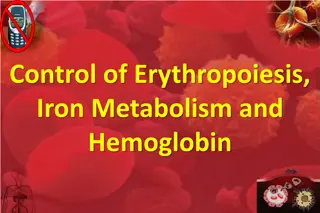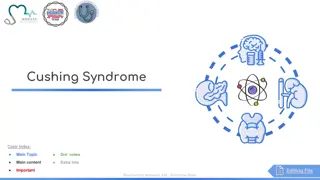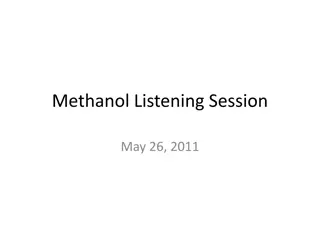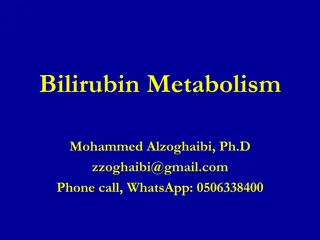Understanding Newer Antianginals and Cardiomyocyte Metabolism
Chronic angina is a condition marked by impaired quality of life and decreased life expectancy, primarily due to myocardial ischemia. It is characterized by symptoms like tightness, heaviness, and pressure sensation, often located retrosternally. The pathophysiology involves a mismatch between oxygen demand and supply, impacting heart rate, contractility, and wall tension. Different types of angina, such as stable, unstable, and vasospastic variants, have specific characteristics and precipitating factors related to coronary artery narrowing and plaque rupture. The metabolism of cardiomyocytes relies on ATP synthesis, which requires oxygen obtained from sources like glucose and fatty acids. Overall, a comprehensive understanding of antianginals and cardiomyocyte metabolism is crucial in managing angina effectively.
Download Presentation

Please find below an Image/Link to download the presentation.
The content on the website is provided AS IS for your information and personal use only. It may not be sold, licensed, or shared on other websites without obtaining consent from the author. Download presentation by click this link. If you encounter any issues during the download, it is possible that the publisher has removed the file from their server.
E N D
Presentation Transcript
NEWER ANTIANGINALS Dr Muzammil Musthafa `
Cardiomyocyte metabolism depends on: ATP SYNTHESIS- which requires oxygen Required for: Membrane transporter- NaK ATPase Excitation contraction coupling : myosin ATP ase and ATP dependent Ca transporter
LCFA(80%) and glucose(20%) major source of ATP- aerobic Glycogen-anaerobic Fetus main source of energy- GLUCOSE Shift to FFA early post natal period
Chronic angina is a condition characterised by impaired QOL and is associated with decreased life expectancy. Primary symptom of myocardial ischemia Occurs when oxygen supply is inadequate to meet the myocardial oxygen demand Tightness , heaviness , squeezing, crunching, pressure sensation Retrosternally located +/- radiation
Stable or CSA Unstable Prinzmetals/vasospastic/variant
Stable Narrowing of epicardial coronaries Atherosclerotic process Short duration 2-5mts Aggravating and relieving factors
Unstable +/_ rest Rupture of atherosclerotic plaque with superimposed thrombus formation Severe( crescendo) Frequency Duration More precipitating factors
Vasospastic/variant/prinzmetals At rest Severe Spasm transient
pathophysiology Demand supply mismatch O2 demand>>>> O2 supply
02 demand Heart rate major determinant Contractility Wall tension 02 supply Difference of AV oxygen pressure CBF duration of diastole, ADP, CVR
Conditions aggravating angina Increased demand Thyrotoxicosis Systemic Hypertension Valvular heart disease Catecholamine analogues(bronchodilators, antidepressants,cocaine)
Reduced oxygen supply Hypoxia Anemia CO poisoning Hypotension Tachycardia
Oxygen consumption Arrested heart- 2ml 02/min/100g Resting heart-8ml /min /100g exercise-70 ml/min/100g
Despite the advances in medical and interventional therapies a significant number of patients with ischemic heart disease and angina pectoris cannot be successfully managed.
Unsuitable anatomy One or several prior revascularization procedures Lack of vascular conduits for CABG Severely impaired left ventricular function in patients with previous CABG or PCI Co -morbidities Age, often in combination with other factors
ANTIANGINALS Classical agents Newer agents
Classic agents-modulate hemodynamic effects hemodynamic agents Newer agents-improve cardiac metabolism and energy availability metabolic modulators
HISTORY OF ANTI ANGINAL THERAPY 1867 : NITRATES 1962 : BETA BLOCKERS 1960 : CABG 1977: PCI 1982 : CCBs 2006: RANOLAZINE
EECP TMR Exercise training Non SCS pharmacologic Newer anti- anginal strategies Pharmacologic Fasudil Nicorandil Ivabradine Trimetazidine Ranolazine
Ranolazine It is a substituted piperazine compound. 1st approved in 2006 pFOX Late sodium current blocker
Ischemia Late INa Ranolazine Na+ Overload Ca++ Overload Diastolic relaxation failure Extravascular compression Chaitman BR. Circulation. 2006;113:2462-2472
Calcium overload causes diastolic relaxation failure, which: Increases myocardial oxygen consumption Reduces myocardial blood flow and oxygen supply(microvascular hypoperfusion) Worsens ischemia and angina
Ranolazine Blood Pressure or Heart Rate not affected Added with classic agents- refractory symptoms, unable to increase dose of classical agents Ranolazine has twin pronged action. 1. pFOX 2. Late Na inward entry blockade ( MAJOR MECHANISM)
Medication Class Beta Blockers Calcium Channel Blockers Nitrates Impact on HR Impact on BP Physiologic Mechanism [ Decrease pump function Decrease Pump function +Vasodilatation(dihydropyrides) Vaso-dilatation Ranolazine Reduced Cardiac Stiffness _ _
MARISA and CARISA TRIAL Increased exercise duration Time to angina episodes Time to 1mm ST DEPRESSION
ERICA TRIAL Anginal episodes per week NTG consumption per week
MERLIN TIMI 36 In ACS ranolazine added to standard therapy was associated with No difference in: Composite efficacy endpoint of CV death, MI, reccurent ischemia Safety endpoints of all cause death, CV hospitalization or symptomatic documented arryhmia. Significant reduction in arrhythmias detected by Holter in first 7 days.
Contraindications QT interval prolongation blockage if Ikr channels upto 6 ms (may be upto 15ms) Especially in patients with Moderate to severe liver disease
metabolized by CYP3A inhibits CYP2D6 CAUTION WITH CYP3A inhibitors/inducers Verapamil, diltiazem Macrolides Ketoconazole Nelfinavir Phenytoin, phenobarbitone, rifampicin
Other beneficial effects HbA1c reduction Antiarrythmic effects (MERLIN TIMI TRIAL) Heart failure (RALI-DHF TRIAL)
Side effects Nausea Dizziness Asthenia Constipation Headache Doses above 1000 mg twice daily are poorly tolerated.
Sinus node inhibition: Ivabradine SA node AV node Common bundle Bundle branches Purkinje fibers .
If current is an inward Na+/K+ current that activates pacemaker cells of the SA node Selectively blocks If in a current-dependent fashion Reduces slope of depolarization, slowing HR
Trials INITIATIVE TRIAL RCT compared ivabradine (5, 7.5 and 10 mg bid) with atenolol - found to be non inferior. ASSOCIATE TRIAL RCT Ivabradine better than placebo in anti anginal efficacy.
C/I in sick sinus syndrome Metabolised via CYP3A4 caution
Luminous phenomenon- sensations of enhanced brightness in a fully maintained visual field Blockage of Ih channels in retina.
Trimetazidine Myocytes Glucose FFA Acyl-CoA O2 requirement of glucose pathway is lower than FFA pathway During ischemia, oxidized FFA levels rise, blunting the glucose pathway Pyruvate - -oxidation oxidation Trimetazidine Acetyl-CoA Energy for contraction .
No EFFECT on HR or BP TRIMPOL II RCT Trimetazidine 20 mg three times a day vs placebo in addition to metoprolol 50mg. Improvement in : o Time to ST segment depression on exercise tolerance testing (ETT), o Decrease in angina frequency
VASCO Trial Largest RCT Showed no benefit as an add on in angina
Side effects Extrapyramidal symptoms Restless leg syndrome. CAUTION- Excretion impaired in p/w severe renal impairment.
Perhexilene Do not affect HR or BP Multiple randomized trials show that it has anti anginal effect as monotherapy or in combination. Inhibition of CPT-1 and, to a lesser extent, CPT-2, resulting in increased glucose and lactate utilisation
S/E Hepatotoxicity Peripheral neuropathy Hypoglycemia
Etomoxir/ Oxfenicine Launched as anti diabetic agent CPT 1 INHIBITOR
Nicorandil Activation of ATP-sensitive K+ channels Dilation of coronary resistance arterioles O N HN O NO2 Nitrate-associated effects Vasodilation of coronary epicardial arteries
20mg bid Tolerance No cross tolerance with nitrates The Impact Of Nicorandil in Angina (IONA) trial - significant reduction of major coronary events in stable angina patients treated with nicorandil compared with placebo as add-on to conventional therapy Additive effects with nitrates
Fasudil Ca2+ Ca2+ Agonist PLC Receptor PIP2 Rho Fasudil IP3 Rho kinase SR Ca2+ Myosin Myosin phosphatase MLCK Ca2+ Calmodulin Myosin-P
Fasudil80 mg TID Improves angina symptoms
Molsodomine & linsodomine Acts like nitrates Orally active
